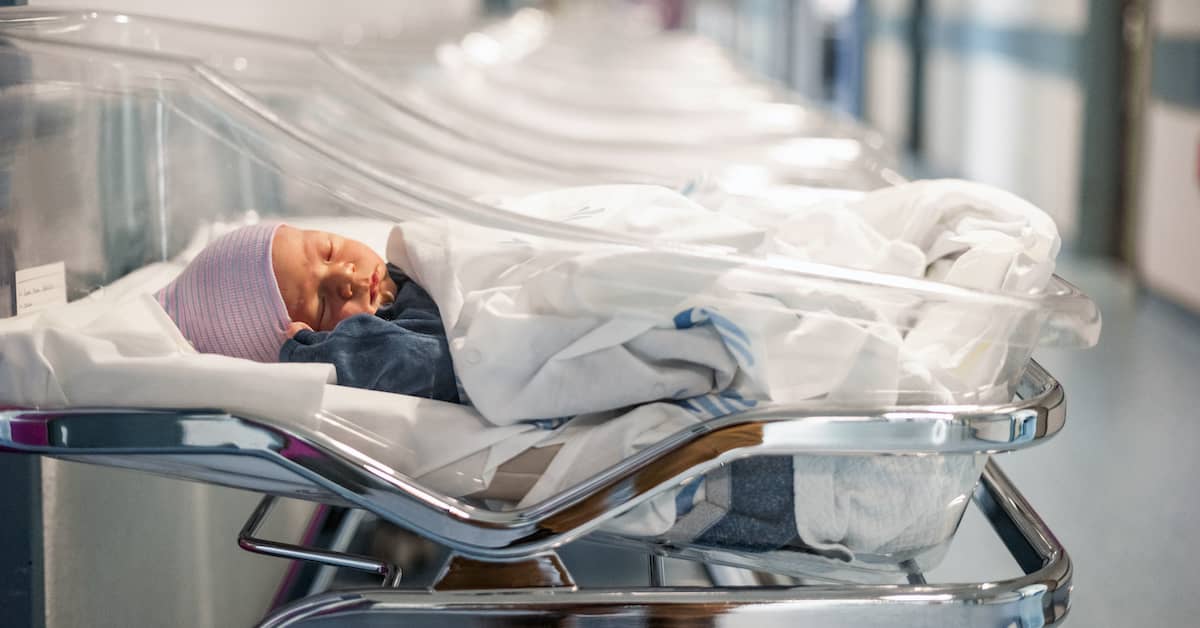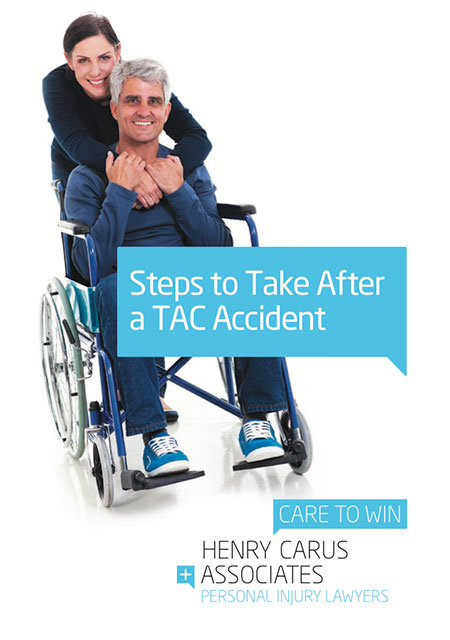
A birth injury is any physical harm suffered by a baby during labour and delivery. Each year, an estimated 1,000 babies born in Australia suffer some form of childbirth-related injury (approximately 50 of every 10,000 babies born).
Medical negligence is a leading cause of birth injuries. If your baby suffered life-altering trauma when he or she was being brought into the world, you owe it to yourself to explore your right to compensation.
Henry Carus + Associates are well-versed in the difficulties and complexities of birth injury claims. Our goal is to support you during this challenging time and pursue the maximum compensation you deserve. Call 03 9001 1318 today for a FREE, no-obligation consultation.
What Is the Definition of a Birth Injury?
Medical advancements have made giving birth a much safer experience for women and babies alike. However, errors on the part of medical professionals and other factors can still lead to complications, injuries, and even death.
The Australian Government Department of Health and Aged Care provides a succinct definition of ‘birth injury’:
‘Also called “neonatal birth trauma”, birth injury to a newborn baby can include many things, from bruising to nerve damage, or a broken bone. Sometimes an injury occurs as a result of life-saving procedures.’
Birth injuries have a variety of different causes, from prolonged labour and maternal health conditions to delays and carelessness in medical intervention. The majority of birth injuries may be prevented with proper care of the mother and the baby during pregnancy, in the delivery room, and after the child is born.
Is a Birth Injury the Same as a Birth Trauma?
Many sources use ‘birth injury’ and ‘birth trauma’ interchangeably. While both can refer to the injuries suffered by a newborn baby, we feel it is important to point out that mothers may also sustain serious injuries due to negligence and complications during labour.
We’ve written before about the heavy toll of obstetric injuries on mothers. ‘Obstetric injuries’ are also known as ‘birth trauma’ in some circles. Whether you suffered a traumatic childbirth or your baby was injured (or both), you should speak with a specialist lawyer as soon as possible to discuss your legal options.
Is a Birth Injury the Same as a Birth Defect?
No, birth injuries are distinct from birth defects. Whereas a birth injury is physical trauma suffered during the process of labour and delivery, a birth defect is a structural or functional abnormality that is already present at birth.
‘In Victoria, approximately one in every 22 pregnancies is affected by a birth defect.’
– Better Health Channel
Birth defects often occur due to a combination of genetics, environment, and behaviours during pregnancy. Some birth defects are preventable, while others are outside the control of both parents and medical professionals.
What Are Common Birth Injuries?
Some birth injuries—such as bruising, swelling of the scalp (a condition known as caput succedaneum), etc.—heal relatively quickly and result in no long-term effects. Others, meanwhile, can have serious consequences that can have lifelong impacts on the child.
At Henry Carus + Associates, our focus is representing the families of children who have suffered a serious birth injury as a result of medical negligence. Common examples of birth injuries that can give rise to these claims include:
Cerebral Palsy
Cerebral palsy is one of the most severe birth injuries. It is caused by brain damage sustained prior to or during childbirth, or shortly after a child is born. People with cerebral palsy may have limited mobility, difficulty maintaining balance and posture, cognitive impairments, and more.
Read More: What Birth Injuries Cause Cerebral Palsy?
Brachial Plexus Injuries
Injury to the shoulder during childbirth can cause brachial plexus injuries. The brachial plexus is a bundle of nerves connected to the shoulders, arms, and hands. Serious trauma can cause weakness, loss of sensation, and even paralysis of the affected arm (a condition known as Erb’s palsy) or hand (Klumpke’s palsy).
Facial Nerve Injuries
Facial nerve injuries may resolve on their own within several months. However, serious damage to the nerves can result in long-term or permanent impairment of the ability to open and close the affected eyelid, difficulty moving the mouth, and even paralysis of one side of the face.
Shoulder Dystocia
Uncommonly, a baby’s head may become trapped against the mother’s pubic bone while being pushed through the birth canal. This is shoulder dystocia, and it is a complication that can lead to a host of issues for the mother and child alike if it is not managed correctly.
Shoulder dystocia can prolong the second stage of labour (the stage at which the baby is being pushed out). This can lead to foetal distress due to lack of oxygen. It also increases the risk of injuries to the mother and baby due to the efforts needed to extract the baby, such as manual techniques and use of instruments.
Bone Fractures
Fractures of the clavicle (a.k.a., the collarbone) are the most common type of broken bone experienced by newborns. The injury may occur if the baby becomes stuck in the birth canal or excess pressure is used to hasten the delivery.
Other bones that may be broken as a result of negligence in labour and delivery include:
- The humerus (upper arm bone)
- The femur (upper leg bone)
- The skull
- Vertebrae in the neck and back
Generally, birth-related bone fractures will fully heal with time and proper care. Complex fractures, however, can lead to diminished mobility and loss of function from the earliest moments of the child’s life.
Neonatal Encephalopathy
Previously known as neonatal hypoxic ischaemic encephalopathy, this refers to a brain injury caused by oxygen deprivation. Neonatal encephalopathy can result in a host of neurological deficits (including cerebral palsy).
Intracranial Haemorrhage
Bleeding within the brain may occur as a result of head trauma during the course of delivery. Potential causes of intracranial haemorrhage include:
- Errors in the use of instruments to assist with labour, such as forceps or vacuum extraction devices
- Improper manoeuvring of the baby to expedite delivery
- Prolonged labour
- Abnormal presentation (e.g., breech birth)
- Pre-existing conditions and risk factors
An intracranial haemorrhage is a medical emergency. Negligence in the delivery of the child may be compounded if a brain bleed is not diagnosed and treated in a timely fashion. The impact of an intracranial haemorrhage that goes untreated can be disastrous for the child, potentially causing severe complications and developmental delays.
Cephalohematoma
Babies may experience bruising of the scalp and other areas of the head as a result of difficult or prolonged labour. When blood collects between the scalp and the skull, it is known as a cephalohematoma.
Most cephalohematomas go away on their own. However, there is a risk of complications such as anaemia, infection, or jaundice (all of which could be serious). Medical professionals should also inspect the site of the cephalohematoma to ensure there is no skull fracture.
Maternal Infection
A number of infections may be passed from the mother to the baby by way of the placenta. These include:
- Chorioamnionitis
- Cytomegalovirus
- Group B streptococcus
- Herpes simplex
- Listeriosis
- Rubella
- Syphilis
- Toxoplasmosis
- Urinary tract infection
Timely diagnosis and proper management of a maternal infection is crucial for the health of the baby. Delays and errors on the part of healthcare professionals may be grounds for a medical negligence claim.
Caesarean Injuries
More than one-third of Aussie women give by Caesarean section (C-section). Flinders University reports that a significant percentage of C-sections involve a complication known as impacted foetal head (IFH).
IFH occurs when the baby’s head is lodged deep within the pelvis, making it difficult for the doctor to deliver the baby via Caesarean. As we’ve seen above, prolonged labour carries the risk of oxygen deprivation, physical injury, and other complications for baby, as well as infection and severe bleeding for mum.
Get Help with Your Birth Injury Claim
A birth injury is a truly devastating event. The bright future you wanted for your child could be suddenly torn away in the first moments of life, leaving you and your family to pick up the pieces. Unfortunately, birth injury claims can be difficult to pursue given the complexity of the evidence and the difficulty of proving negligence on the part of doctors and other medical staff.
You Deserve More. That is our mantra and mission at Henry Carus + Associates, and it is reflected in everything we do. In addition to preparing a strong claim and exploring all legal avenues for obtaining compensation, we provide you and your loved ones with the support and guidance you all need in this difficult time.
For a FREE, no-obligation consultation, contact Henry Carus + Associates today. Our birth injury lawyers serve clients in Melbourne and throughout VIC.
 Call Us Today
Call Us Today



